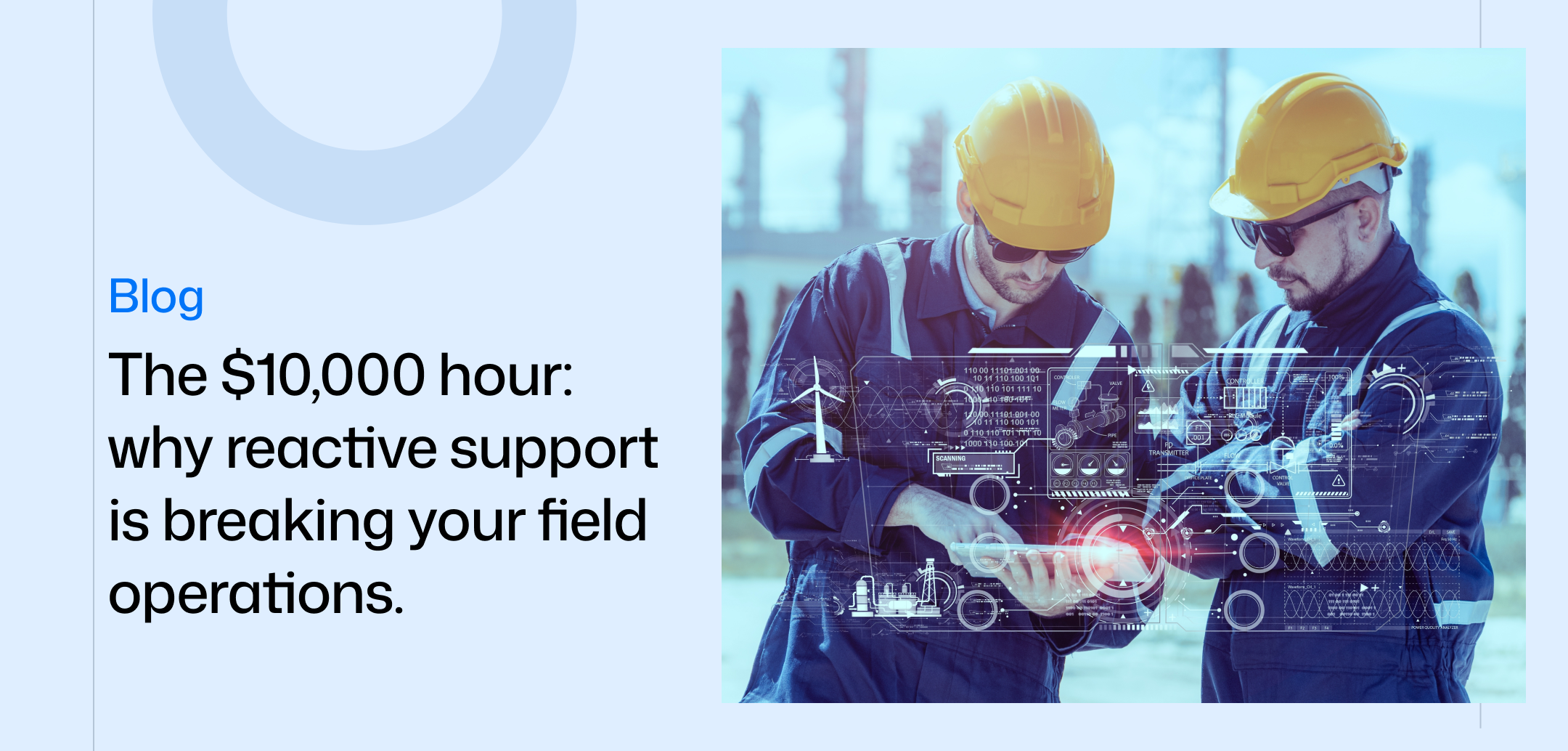
.svg)
It starts with silence.
A technician stares at a stalled compressor, the hum gone, the data feed flatlined. Every passing minute means another $10,000 in downtime.
He radios HQ.
Waits.
Refreshes a PDF.
Waits again.
By the time someone from the support team responds, the customer’s already on the phone. The downtime report’s been filed. And another “avoidable” incident gets written off as just part of the job.
But it isn’t.
It’s the cost of reactive support — and in Oil & Gas, manufacturing, and field service, it’s costing companies millions every year.
The problem isn’t your people. It’s your process.
Most field teams are skilled, trained, and committed. But when their support systems lag behind the speed of their work, even the best crews can’t win.
Here’s what happens:
- Support is delayed. Ticket queues and email chains slow down response times.
- Context is lost. A text or screenshot doesn’t tell the full story of what went wrong.
- Documentation is missing. When the job’s done, there’s no proof — no data to improve next time.
According to Field Service News, 73% of field issues escalate because teams don’t have access to real-time help or contextual guidance at the moment of failure.
That’s not just a support problem.
It’s a business continuity problem.
Why “real-time” is the new competitive advantage.
Customers no longer judge you by your uptime alone.
They judge you by how fast you respond when things go wrong.
Every industry leader — from energy to automotive to life sciences — is racing to close this gap. They’re replacing call-based escalation models with digital collaboration tools that connect experts and field technicians instantly.
That’s the shift Atheer enables: turning reactive, ticket-based support into proactive, in-the-moment field collaboration.
The new model for field support.
Here’s what real-time field support looks like:
- Guided workflows that talk back. Technicians follow digital SOPs that trigger help prompts when they hit a snag — not 30 minutes later.
- Instant expert connection. Live video,AR annotation, and real-time chat connect the frontline to HQ without leaving the task.
- Full traceability. Every step, image, and decision is logged automatically — creating an audit trail and insights for continuous improvement.
- Faster resolution, better morale. Support arrives in seconds, not hours. Techs feel supported, not stranded.
The impact?
Customers using real-time support workflows report up to 40% faster resolutions and 25% fewer repeat visits, according to internal Atheer case data.
From firefighting to foresight.
Reactive support puts your team in constant firefighting mode — always chasing the next emergency, never preventing it.
But when support is embedded inside the work itself, problems don’t escalate.
They’re solved at the source.
That’s how leaders are transforming service from a cost center into a competitive advantage. Not with more people or more process — but with smarter, connected execution.
The takeaway.
The next time your tech calls for help, ask yourself:
Why are we still waiting for problems to happen when we can prevent them in real time?
Because every minute of downtime costs more than money — it costs trust.
Don’t wait for the next support ticket. Be there when it matters.
See how Atheer enables real-time field support
Get a demoSimplify your service operations.
Discover how Atheer can streamline your service network operations and help you deliver a superior customer experience.
Get a demo















%201%20(1).svg)
.svg)












.png)
.png)
.png)






